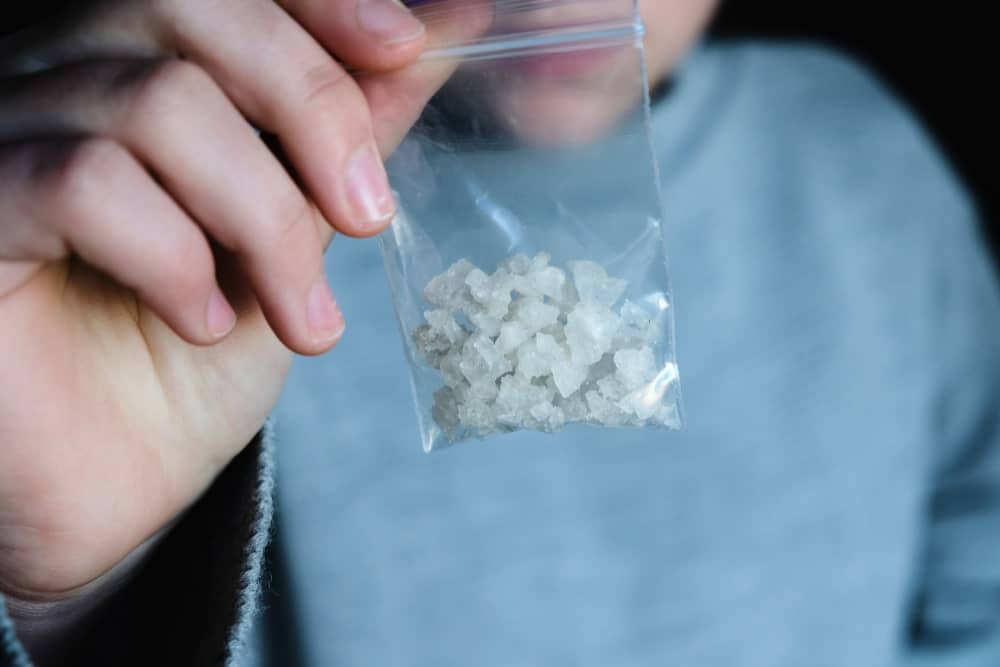Most people don’t know it because the media attention is limited, but methamphetamine use is going up, and it has been since 2015. Now, almost a million Americans are addicted to meth at any time.
Meth is the 4th-leading cause of drug-related death in the United States. That’s 13% of all drug deaths.
Other shocking meth stats include:
- Meth seizures have tripled since 2013.
- Meth deaths rose by 255% between 2010 and 2015.
- 22% of all meth users say that they inject the drug, which is associated with higher risks.
- 28% of people who have a meth addiction also have a psychotic disorder.
Around 1.6 million people use meth every year. There needs to be action to combat the meth epidemic before it gets out of hand.
But why is the country so vulnerable to meth all of a sudden?
The more that’s known about the meth epidemic and the people who it’s affecting, the better we can tackle the epidemic before it gets out of hand.
Read on to learn more about the 2020 meth epidemic:
Who is Using Meth?
Right now, the people who are most vulnerable to meth include:
- People who live on a low income
- People with less than a high school education
- People with no health insurance
That being said, people of all demographics use meth. That’s especially true now that meth users are overlapping with opioid users in many places. In fact, 80% to 90% of heroin users also use meth.
People who use both meth and opioids tend to be:
- Between 18 and 25 years old
- Long-term heroin users
- Prescription drug users, specifically of abuse-deterrent medications, like oxycodone that resists crushing or that contains naltrexone
But again, people of any age group can and do use meth, especially in 2020.
Which Parts of America Have the Most Meth?
Today, meth can be found in every part of America.
Historically, the drug has been common in the West and Midwest regions for decades. In the West, it’s still the leading cause of drug-related deaths. For the first time, meth is showing up on the East Coast in droves.
Across the country, meth is becoming more prominent, regardless of the state.
For example:
- Meth overdose deaths grew by 22% nationwide between 2017 and 2018
- Positive drug tests for meth grew by 487% nationwide between 2013 and 2019
Are People Dying From Meth Addiction?
Methamphetamine killed 12,676 people over a 10-year period leading up to 2018. The biggest increase happened between 2015 and 2018.
A meth overdose can cause death through:
- Cardiovascular failure
- Respiratory failure
- Seizures and neurological damage
Why Are Meth Death Rates Increasing?
It’s hard to point to one reason that meth overdoses, addiction, and death are becoming more common. There are many contributing factors, such as:
- The opioid epidemic: Most heroin users also use meth. That’s because the sedating opioid effects counter the upper effects of meth, leading to a mellow high. However, this also increases the risk of death.
- The dropping cost of meth: Some people turn to meth as a cheap alternative for other drugs. In 1986, the average price for meth was $575 per gram. Nearly 30 years later, it had dropped to just $194 per gram.
- The increasing purity of meth: The typical meth dose is much stronger today than it was in 1986. Back then, most meth was around 52% pure, while today it’s 91% pure. Purer meth is more likely to cause an overdose.
- Meth users are aging: A few lifelong meth users are now reaching their 40s, 50s, and beyond. As people who started using meth in the 1990s get older, their cardiovascular systems are less able to handle the stresses of meth. That increases the risk of death.
- Not enough treatment access: Only 1 in 10 people who need meth treatment actually receive it. In rural areas, it can be hard to access treatment, and rural areas have the biggest concentration of meth users.
That’s not to mention tainted drug supplies. In some areas, meth supplies are tainted with additives or even other illicit drugs.
Your meth could include talcum, acetaminophen, and even powdered caffeine; all used to increase the profit and cut costs. None of these substances are safe to smoke or inject.
Tainted meth can also include opioid drugs, like fentanyl, or research chemicals. These are added for potency, and if you don’t have a tolerance for them, they could be lethal. It’s impossible to tell if meth has been tampered with by looking at it with the naked eye.
Is Meth a Public Health Crisis?
Meth hasn’t been declared a public health crisis by drug officials yet, but the evidence says that it’s well on its way.
If meth overdoses got the same attention that the opioid epidemic receives, then there could be a stronger public response.
That could lead to:
- Increased access to treatment
- Public awareness of the health risks of meth
- Harm reduction awareness and resources, including syringe drop-offs and better education about tainted drugs
As of 2020, meth still has the strongest presence in the West and Southwest parts of the United States. Still, its scope is growing fast all over, especially in the Northeast where it’s common to mix it with opioids.
People who are affected by the meth crisis should seek the help of a licensed treatment center. Meth addiction can be life-threatening and anyone can be affected.

